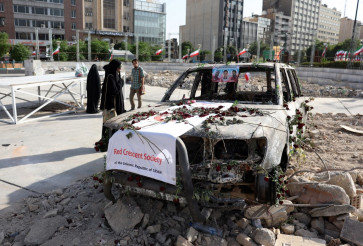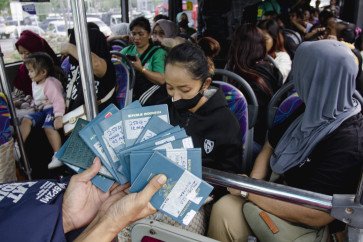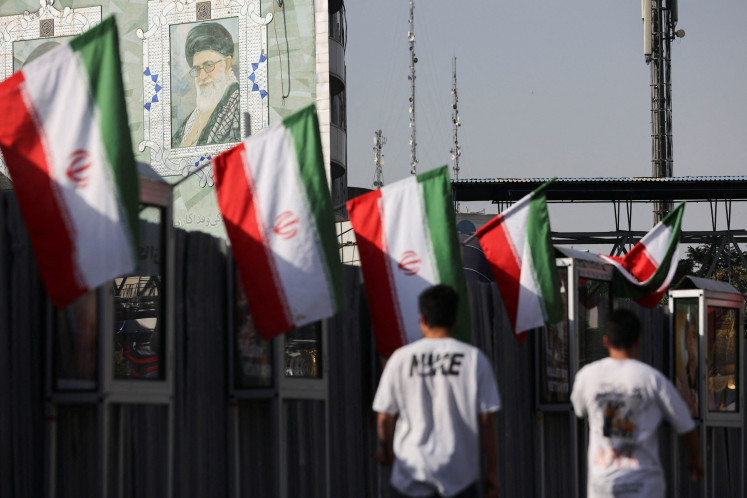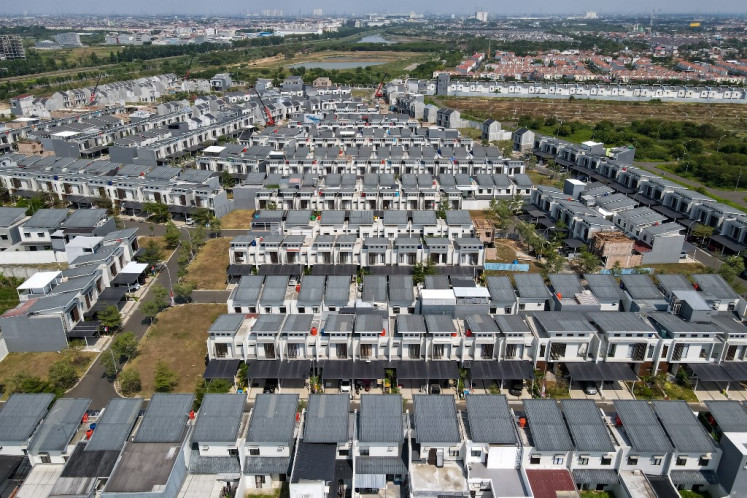Popular Reads
Top Results
Can't find what you're looking for?
View all search resultsPopular Reads
Top Results
Can't find what you're looking for?
View all search resultsVespa is back to recapture old glory in Indonesia
Vespa is quietly making a comeback in Indonesia and its Italian owners are under no illusions that it can fully recapture the old glory it once enjoyed
Change text size
Gift Premium Articles
to Anyone

V
espa is quietly making a comeback in Indonesia and its Italian owners are under no illusions that it can fully recapture the old glory it once enjoyed. Today the streets of Jakarta and other major Indonesian cities are clogged with motorcycles and scooters, but they are dominated by Asian makes that retail at half the price of the lowest end of the Vespa range.
On Thursday, PT Piaggio Indonesia launched “Vespa S 150ie”, a new model inspired by the design of the classic Vespa Vespino (commonly known in Indonesia as Vespa Excel), which was highly popular in the 1990s.
The square-shaped headlight in the new model, which retails for Rp 27.5 million (US$3,000) on the road, will likely jolt the memory of old Vespino fans.
There is one major difference in the new model: Its exhaust meets the high European emission standard and is hence friendlier to the environment.
“We are optimistic because the economy is growing, the motorcycle market is increasing, and our presence is growing stronger,” Piaggio Indonesia managing director Sergio Mosca said at the launching.
Vespa returned to the Indonesian market in August 2011 after a hiatus of more than 10 years when it had no production or distribution base present. Today, Vespa has 43 outlets across Indonesia, including 11 in Jakarta. Unlike in the past, the new scooters are imported from Vietnam, where Piaggio has set up a manufacturing base.
Whether or not Vespa will reestablish a manufacturing plant in Indonesia depends on market growth, Mosca said, adding: “We have to reach a certain number of sales to have an economy of scale.”
He may just have his wish come true. Sales in the five months of 2011 reached 5,000 units and in the first quarter of 2012 already reached 5,000 units, significant progress but still a tiny fraction of the overall motorcycle sales in Indonesia, which reached 8.04 million units last year.
Until 2001, Vespa in Indonesia was produced locally by PT Danmotors Vespa Indonesia, a joint venture involving Piaggio, which also exported to other Asian countries. The company closed in 2001 in the face of strict government rules on emissions, which Vespa could not then meet.
Vespa has a long history of domination in Indonesia that runs from the 1970s to the 1990s, and it still commands the strong loyalty of its customers. In spite of its 10-year absence, Indonesia still has the second largest Vespa community in the world, with 42,000 members, behind Vespa’s motherland Italy with 120,000 members but ahead of France with 39,000.
Commenting on the fierce competition Vespa faces today in the Indonesian market particularly from cheaper motorcycles and scooters, Mosca said: “To our customers, Vespa is not only a utility vehicle. They choose our product for the experience, the feeling and the emotion.”
Vouching for Mosca’s statement, Ronny Rasidi, founder of the Jakarta Vespa Club, said he was not worried so much about Vespa recapturing old glories, when the Italian scooters ruled the streets. “It was never about the numbers. It has always been about the camaraderie among Vespa owners, especially in terms of the old models,” Ronny told The Jakarta Post.









